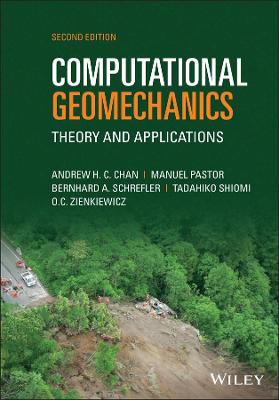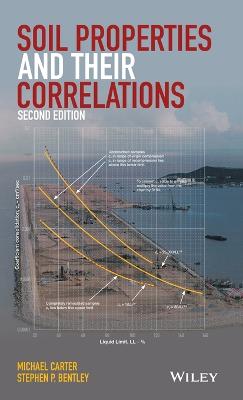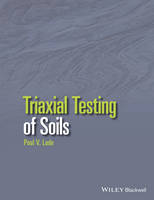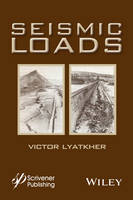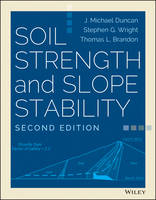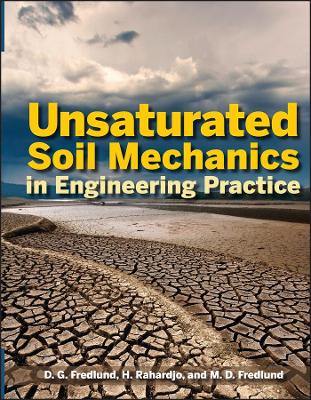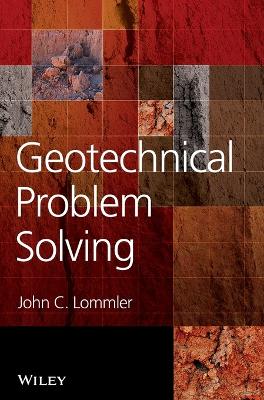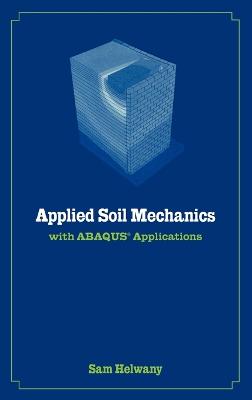Principles and Practice of Ground Improvement
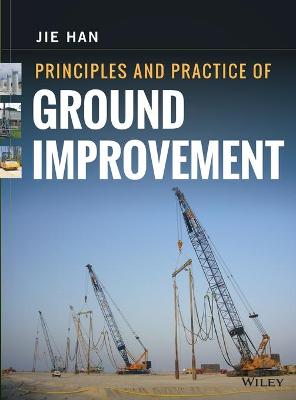 -15%
portes grátis
-15%
portes grátis
Principles and Practice of Ground Improvement
Han, Jie
John Wiley & Sons Inc
07/2015
432
Dura
Inglês
9781118259917
15 a 20 dias
1216
Chapter 1 Introduction 1
1.1 Introduction 1
1.2 Problematic Geomaterials and Conditions 1
1.2.1 Problematic Geomaterials 1
1.2.2 Problematic Conditions 1
1.3 Geotechnical Problems and Failures 2
1.4 Ground Improvement Methods and Classification 2
1.4.1 Historical Developments 2
1.4.2 Classification 3
1.4.3 General Description, Function, and Application 5
1.5 Selection of Ground Improvement Method 5
1.5.1 Necessity of Ground Improvement 5
1.5.2 Factors for Selecting Ground Improvement Method 10
1.5.3 Selection Procedure 12
1.6 Design Considerations 12
1.7 Construction 13
1.8 Quality Control and Assurance 14
1.9 Recent Advances and Trends for Future Developments 14
1.9.1 Recent Advances 14
1.9.2 Trends for Future Developments 14
1.10 Organization of Book 14
Problems 14
References 15
Chapter 2 Geotechnical Materials, Testing, and Design 17
2.1 Introduction 17
2.2 Geomaterials and Properties 17
2.2.1 Classifications 17
2.2.2 Physical Properties 18
2.2.3 Mechanical Properties 19
2.2.4 Hydraulic Properties 25
2.2.5 Compaction of Geomaterial 26
2.3 Geosynthetics and Properties 29
2.3.1 Type of Geosynthetic 29
2.3.2 Function 30
2.3.3 Properties and Test Methods 33
2.4 In situ Testing 40
2.4.1 Standard Penetration Test 40
2.4.2 Cone Penetration Test 42
2.4.3 Vane Shear Test 45
2.4.4 Pressuremeter Test 46
2.4.5 Plate Load Test 47
2.5 Shallow Foundation Design 48
2.5.1 Bearing Capacity 48
2.5.2 Settlement 50
2.5.3 Consolidation 54
2.6 Slope Stability Analysis 55
2.6.1 Introduction 55
2.6.2 Methods for Slope Stability Analysis 55
2.7 Earth Retaining Wall Analysis 61
2.7.1 Type of Wall 61
2.7.2 Lateral Earth Pressure Coefficient 61
2.7.3 Rankine's Theory 61
2.7.4 Coulomb's Theory 63
2.8 Liquefaction Analysis 64
2.8.1 Liquefaction Potential 64
2.8.2 Earthquake-Induced Settlement 66
Problems 67
References 70
Chapter 3 Shallow and Deep Compaction 73
3.1 Introduction 73
3.2 Densification Principles 73
3.3 Conventional Compaction 73
3.3.1 Introduction 73
3.3.2 Principles 74
3.3.3 Design Considerations 77
3.3.4 Design Parameters and Procedure 80
3.3.5 Design Example 80
3.3.6 Construction 81
3.3.7 Quality Control and Assurance 82
3.4 Intelligent Compaction 82
3.4.1 Introduction 82
3.4.2 Principles 83
3.4.3 Design Considerations 86
3.4.4 Construction 88
3.4.5 Quality Control and Assurance 88
3.5 Deep Dynamic Compaction 89
3.5.1 Introduction 89
3.5.2 Principles 90
3.5.3 Design Considerations 91
3.5.4 Design Parameters and Procedure 97
3.5.5 Design Example 98
3.5.6 Construction 99
3.5.7 Quality Control and Assurance 99
3.6 Rapid Impact Compaction 100
3.6.1 Introduction 100
3.6.2 Principles 101
3.6.3 Design Considerations 101
3.6.4 Design Parameters and Procedure 103
3.6.5 Design Example 103
3.6.6 Construction 104
3.6.7 Quality Control and Assurance 104
3.7 Vibro-compaction 104
3.7.1 Introduction 104
3.7.2 Principles 106
3.7.3 Design Considerations 109
3.7.4 Design Parameters and Procedure 110
3.7.5 Design Example 111
3.7.6 Construction 112
3.7.7 Quality Control and Assurance 113
Problems 113
References 115
Chapter 4 Overexcavation and Replacement 117
4.1 Introduction 117
4.1.1 Basic Concept 117
4.1.2 Suitability 117
4.1.3 Applications 117
4.1.4 Advantages and Limitations 117
4.2 Principles 118
4.2.1 Stress Distribution 118
4.2.2 Failure Modes 119
4.3 Design Considerations 119
4.3.1 General Shear Failure within Replaced Zone 120
4.3.2 Punching Failure through the Replaced Zone 120
4.3.3 Failure of Distributed Foundation 121
4.3.4 Punching Failure of Replaced Zone into In Situ Soil 121
4.3.5 Minimum Bearing Capacity and Factor of Safety 122
4.3.6 Settlement of a Footing on Layered Soils of Infinite Width 122
4.3.7 Settlement of a Footing on a Replaced Zone with Limited Area 122
4.4 Design Parameters and Procedure 124
4.4.1 Design Parameters 124
4.4.2 Design Procedure 124
4.5 Design Example 125
4.6 Construction 130
4.6.1 Selection of Fill 130
4.6.2 Excavation 131
4.6.3 Placement and Compaction 131
4.7 Quality Control and Assurance 131
4.7.1 Locations and Dimensions 131
4.7.2 Compacted Fill 131
4.7.3 Performance Evaluation 131
Problems 131
References 132
Chapter 5 Deep Replacement 133
5.1 Introduction 133
5.1.1 Basic Concepts 133
5.1.2 Suitability 135
5.1.3 Applications 135
5.1.4 Advantages and Limitations 135
5.2 Principles 136
5.2.1 Functions 136
5.2.2 Densification 136
5.2.3 Load Transfer Mechanisms 137
5.2.4 Failure Modes 140
5.3 Design Considerations 141
5.3.1 General Rules 141
5.3.2 Densification Effect 142
5.3.3 Bearing Capacity 143
5.3.4 Settlement 145
5.3.5 Consolidation 148
5.3.6 Stability 151
5.3.7 Liquefaction 152
5.3.8 Design of Geosynthetic-encased Granular Columns 153
5.4 Design Parameters and Procedure 156
5.4.1 Granular Columns 156
5.4.2 Concrete Columns 157
5.4.3 Geosynthetic-encased Granular Column 157
5.5 Design Examples 158
5.6 Construction 163
5.6.1 Sand Compaction Columns 163
5.6.2 Stone Columns 163
5.6.3 Rammed Aggregate Columns 164
5.6.4 Vibro-Concrete Columns 164
5.6.5 Controlled Modulus (Stiffness) Columns 165
5.6.6 Geosynthetic-encased Granular Columns 165
5.7 Quality Control and Assurance 165
5.7.1 Locations and Dimensions 165
5.7.2 Fill Material 165
5.7.3 Installation Parameters 166
5.7.4 Performance Evaluation 167
Problems 168
References 170
Chapter 6 Drainage and Dewatering 173
6.1 Introduction 173
6.2 Principles of Water Flow in Geomaterial 174
6.2.1 Bernoulli's Equation 174
6.2.2 Flow Net 175
6.2.3 Pore Water Pressure and Uplift Force 176
6.2.4 Stresses Due to Seepage 176
6.3 Filtration 177
6.3.1 Introduction 177
6.3.2 Principles 178
6.3.3 Design Considerations 180
6.3.4 Design Parameters and Procedure 184
6.3.5 Design Example 185
6.3.6 Construction 185
6.3.7 Quality Control and Assurance 185
6.4 Drainage 185
6.4.1 Introduction 185
6.4.2 Principles 187
6.4.3 Design Considerations 188
6.4.4 Design Parameters and Procedure 193
6.4.5 Design Examples 194
6.4.6 Construction 195
6.4.7 Quality Control and Assurance 195
6.5 Dewatering 196
6.5.1 Introduction 196
6.5.2 Principles 199
6.5.3 Design Considerations 200
6.5.4 Design Parameters and Procedure 202
6.5.5 Design Example 205
6.5.6 Construction 206
6.5.7 Quality Control and Assurance 206
Problems 206
References 209
Chapter 7 Preloading 211
7.1 Introduction 211
7.1.1 Basic Concept 211
7.1.2 Suitability 211
7.1.3 Applications 212
7.1.4 Advantages and Limitations 212
7.2 Principles 212
7.2.1 Precompression 212
7.2.2 Stress and Ground Movement 213
7.2.3 Consolidation Theory 214
7.2.4 Vacuum and Fill Combined Preloading 217
7.2.5 Surcharge Preloading 217
7.3 Design Considerations 218
7.3.1 Vertical Drains 218
7.3.2 Preloading 220
7.3.3 Surcharge Effect 223
7.4 Design Parameters and Procedures 226
7.4.1 Design Parameters 226
7.4.2 Design Procedure 226
7.5 Design Example 227
7.6 Construction 235
7.6.1 Vertical Drains 235
7.6.2 Drainage Layer 235
7.6.3 Fill Preloading 236
7.6.4 Vacuum Preloading 237
7.7 Quality Control and Assurance 237
7.7.1 Materials 238
7.7.2 Construction Details 238
7.7.3 Field Monitoring 238
7.7.4 Performance Evaluation 240
Problems 240
References 242
Chapter 8 Deep Mixing and Grouting 245
8.1 Introduction 245
8.2 Deep Mixing 245
8.2.1 Introduction 245
8.2.2 Principles 248
8.2.3 Design Considerations 259
8.2.4 Design Parameters and Procedure 268
8.2.5 Design Example 268
8.2.6 Construction 270
8.2.7 Quality Control and Assurance 272
8.3 Grouting 273
8.3.1 Introduction 273
8.3.2 Principles 275
8.3.3 Design Considerations 283
8.3.4 Design Parameters and Procedure 289
8.3.5 Design Example 289
8.3.6 Construction 290
8.3.7 Quality Control and Assurance 291
Problems 291
References 293
Chapter 9 in Situ Ground Reinforcement 297
9.1 Introduction 297
9.2 Ground Anchors 297
9.2.1 Introduction 297
9.2.2 Principles 300
9.2.3 Design Considerations 303
9.2.4 Design Parameters and Procedure 311
9.2.5 Design Example 311
9.2.6 Construction 313
9.2.7 Quality Control and Assurance 313
9.3 Soil Nailing 314
9.3.1 Introduction 314
9.3.2 Principle 315
9.3.3 Design Considerations 318
9.3.4 Design Parameters and Procedure 327
9.3.5 Design Example 328
9.3.6 Construction 329
9.3.7 Quality Control and Assurance 329
Problems 330
References 332
Chapter 10 Fill Reinforcement 333
10.1 Introduction 333
10.2 Geosynthetic-Reinforced Slopes 333
10.2.1 Introduction 333
10.2.2 Principles 334
10.2.3 Design and Analysis 336
10.2.4 Design Parameters and Procedure 341
10.2.5 Construction 344
10.2.6 Quality Control and Assurance 345
10.3 Geosynthetic-Reinforced Embankments 345
10.3.1 Introduction 345
10.3.2 Principles 345
10.3.3 Design Considerations 346
10.3.4 Design Parameters and Procedure 351
10.3.5 Construction 352
10.3.6 Quality Control and Assurance 353
10.4 Geosynthetic-Reinforced Column-Supported Embankments 353
10.4.1 Introduction 353
10.4.2 Principles 354
10.4.3 Design Considerations 359
10.4.4 Design Parameters and Procedure 362
10.4.5 Construction 363
10.4.6 Quality Control and Assurance 363
10.5 Mechanically Stabilized Earth Walls 364
10.5.1 Introduction 364
10.5.2 Principles 364
10.5.3 Design Considerations 367
10.5.4 Design Parameters and Procedure 370
10.5.5 Construction 374
10.5.6 Quality Control and Assurance 374
10.6 Geosynthetic-Reinforced Foundations 375
10.6.1 Introduction 375
10.6.2 Principles 375
10.6.3 Design Considerations 377
10.6.4 Design Parameters and Procedure 380
10.6.5 Construction 382
10.6.6 Quality Control and Assurance 382
10.7 Geosynthetic-Reinforced Roads 382
10.7.1 Introduction 382
10.7.2 Principles 383
10.7.3 Design Considerations for Unpaved Roads 387
10.7.4 Design Parameters and Procedure for Unpaved Roads 389
10.7.5 Design Considerations for Paved Roads 390
10.7.6 Design Parameters and Procedure for Paved Roads 392
10.7.7 Design Examples 393
10.7.8 Construction 396
10.7.9 Quality Control and Assurance 396
Problems 396
References 399
Index 403
Chapter 1 Introduction 1
1.1 Introduction 1
1.2 Problematic Geomaterials and Conditions 1
1.2.1 Problematic Geomaterials 1
1.2.2 Problematic Conditions 1
1.3 Geotechnical Problems and Failures 2
1.4 Ground Improvement Methods and Classification 2
1.4.1 Historical Developments 2
1.4.2 Classification 3
1.4.3 General Description, Function, and Application 5
1.5 Selection of Ground Improvement Method 5
1.5.1 Necessity of Ground Improvement 5
1.5.2 Factors for Selecting Ground Improvement Method 10
1.5.3 Selection Procedure 12
1.6 Design Considerations 12
1.7 Construction 13
1.8 Quality Control and Assurance 14
1.9 Recent Advances and Trends for Future Developments 14
1.9.1 Recent Advances 14
1.9.2 Trends for Future Developments 14
1.10 Organization of Book 14
Problems 14
References 15
Chapter 2 Geotechnical Materials, Testing, and Design 17
2.1 Introduction 17
2.2 Geomaterials and Properties 17
2.2.1 Classifications 17
2.2.2 Physical Properties 18
2.2.3 Mechanical Properties 19
2.2.4 Hydraulic Properties 25
2.2.5 Compaction of Geomaterial 26
2.3 Geosynthetics and Properties 29
2.3.1 Type of Geosynthetic 29
2.3.2 Function 30
2.3.3 Properties and Test Methods 33
2.4 In situ Testing 40
2.4.1 Standard Penetration Test 40
2.4.2 Cone Penetration Test 42
2.4.3 Vane Shear Test 45
2.4.4 Pressuremeter Test 46
2.4.5 Plate Load Test 47
2.5 Shallow Foundation Design 48
2.5.1 Bearing Capacity 48
2.5.2 Settlement 50
2.5.3 Consolidation 54
2.6 Slope Stability Analysis 55
2.6.1 Introduction 55
2.6.2 Methods for Slope Stability Analysis 55
2.7 Earth Retaining Wall Analysis 61
2.7.1 Type of Wall 61
2.7.2 Lateral Earth Pressure Coefficient 61
2.7.3 Rankine's Theory 61
2.7.4 Coulomb's Theory 63
2.8 Liquefaction Analysis 64
2.8.1 Liquefaction Potential 64
2.8.2 Earthquake-Induced Settlement 66
Problems 67
References 70
Chapter 3 Shallow and Deep Compaction 73
3.1 Introduction 73
3.2 Densification Principles 73
3.3 Conventional Compaction 73
3.3.1 Introduction 73
3.3.2 Principles 74
3.3.3 Design Considerations 77
3.3.4 Design Parameters and Procedure 80
3.3.5 Design Example 80
3.3.6 Construction 81
3.3.7 Quality Control and Assurance 82
3.4 Intelligent Compaction 82
3.4.1 Introduction 82
3.4.2 Principles 83
3.4.3 Design Considerations 86
3.4.4 Construction 88
3.4.5 Quality Control and Assurance 88
3.5 Deep Dynamic Compaction 89
3.5.1 Introduction 89
3.5.2 Principles 90
3.5.3 Design Considerations 91
3.5.4 Design Parameters and Procedure 97
3.5.5 Design Example 98
3.5.6 Construction 99
3.5.7 Quality Control and Assurance 99
3.6 Rapid Impact Compaction 100
3.6.1 Introduction 100
3.6.2 Principles 101
3.6.3 Design Considerations 101
3.6.4 Design Parameters and Procedure 103
3.6.5 Design Example 103
3.6.6 Construction 104
3.6.7 Quality Control and Assurance 104
3.7 Vibro-compaction 104
3.7.1 Introduction 104
3.7.2 Principles 106
3.7.3 Design Considerations 109
3.7.4 Design Parameters and Procedure 110
3.7.5 Design Example 111
3.7.6 Construction 112
3.7.7 Quality Control and Assurance 113
Problems 113
References 115
Chapter 4 Overexcavation and Replacement 117
4.1 Introduction 117
4.1.1 Basic Concept 117
4.1.2 Suitability 117
4.1.3 Applications 117
4.1.4 Advantages and Limitations 117
4.2 Principles 118
4.2.1 Stress Distribution 118
4.2.2 Failure Modes 119
4.3 Design Considerations 119
4.3.1 General Shear Failure within Replaced Zone 120
4.3.2 Punching Failure through the Replaced Zone 120
4.3.3 Failure of Distributed Foundation 121
4.3.4 Punching Failure of Replaced Zone into In Situ Soil 121
4.3.5 Minimum Bearing Capacity and Factor of Safety 122
4.3.6 Settlement of a Footing on Layered Soils of Infinite Width 122
4.3.7 Settlement of a Footing on a Replaced Zone with Limited Area 122
4.4 Design Parameters and Procedure 124
4.4.1 Design Parameters 124
4.4.2 Design Procedure 124
4.5 Design Example 125
4.6 Construction 130
4.6.1 Selection of Fill 130
4.6.2 Excavation 131
4.6.3 Placement and Compaction 131
4.7 Quality Control and Assurance 131
4.7.1 Locations and Dimensions 131
4.7.2 Compacted Fill 131
4.7.3 Performance Evaluation 131
Problems 131
References 132
Chapter 5 Deep Replacement 133
5.1 Introduction 133
5.1.1 Basic Concepts 133
5.1.2 Suitability 135
5.1.3 Applications 135
5.1.4 Advantages and Limitations 135
5.2 Principles 136
5.2.1 Functions 136
5.2.2 Densification 136
5.2.3 Load Transfer Mechanisms 137
5.2.4 Failure Modes 140
5.3 Design Considerations 141
5.3.1 General Rules 141
5.3.2 Densification Effect 142
5.3.3 Bearing Capacity 143
5.3.4 Settlement 145
5.3.5 Consolidation 148
5.3.6 Stability 151
5.3.7 Liquefaction 152
5.3.8 Design of Geosynthetic-encased Granular Columns 153
5.4 Design Parameters and Procedure 156
5.4.1 Granular Columns 156
5.4.2 Concrete Columns 157
5.4.3 Geosynthetic-encased Granular Column 157
5.5 Design Examples 158
5.6 Construction 163
5.6.1 Sand Compaction Columns 163
5.6.2 Stone Columns 163
5.6.3 Rammed Aggregate Columns 164
5.6.4 Vibro-Concrete Columns 164
5.6.5 Controlled Modulus (Stiffness) Columns 165
5.6.6 Geosynthetic-encased Granular Columns 165
5.7 Quality Control and Assurance 165
5.7.1 Locations and Dimensions 165
5.7.2 Fill Material 165
5.7.3 Installation Parameters 166
5.7.4 Performance Evaluation 167
Problems 168
References 170
Chapter 6 Drainage and Dewatering 173
6.1 Introduction 173
6.2 Principles of Water Flow in Geomaterial 174
6.2.1 Bernoulli's Equation 174
6.2.2 Flow Net 175
6.2.3 Pore Water Pressure and Uplift Force 176
6.2.4 Stresses Due to Seepage 176
6.3 Filtration 177
6.3.1 Introduction 177
6.3.2 Principles 178
6.3.3 Design Considerations 180
6.3.4 Design Parameters and Procedure 184
6.3.5 Design Example 185
6.3.6 Construction 185
6.3.7 Quality Control and Assurance 185
6.4 Drainage 185
6.4.1 Introduction 185
6.4.2 Principles 187
6.4.3 Design Considerations 188
6.4.4 Design Parameters and Procedure 193
6.4.5 Design Examples 194
6.4.6 Construction 195
6.4.7 Quality Control and Assurance 195
6.5 Dewatering 196
6.5.1 Introduction 196
6.5.2 Principles 199
6.5.3 Design Considerations 200
6.5.4 Design Parameters and Procedure 202
6.5.5 Design Example 205
6.5.6 Construction 206
6.5.7 Quality Control and Assurance 206
Problems 206
References 209
Chapter 7 Preloading 211
7.1 Introduction 211
7.1.1 Basic Concept 211
7.1.2 Suitability 211
7.1.3 Applications 212
7.1.4 Advantages and Limitations 212
7.2 Principles 212
7.2.1 Precompression 212
7.2.2 Stress and Ground Movement 213
7.2.3 Consolidation Theory 214
7.2.4 Vacuum and Fill Combined Preloading 217
7.2.5 Surcharge Preloading 217
7.3 Design Considerations 218
7.3.1 Vertical Drains 218
7.3.2 Preloading 220
7.3.3 Surcharge Effect 223
7.4 Design Parameters and Procedures 226
7.4.1 Design Parameters 226
7.4.2 Design Procedure 226
7.5 Design Example 227
7.6 Construction 235
7.6.1 Vertical Drains 235
7.6.2 Drainage Layer 235
7.6.3 Fill Preloading 236
7.6.4 Vacuum Preloading 237
7.7 Quality Control and Assurance 237
7.7.1 Materials 238
7.7.2 Construction Details 238
7.7.3 Field Monitoring 238
7.7.4 Performance Evaluation 240
Problems 240
References 242
Chapter 8 Deep Mixing and Grouting 245
8.1 Introduction 245
8.2 Deep Mixing 245
8.2.1 Introduction 245
8.2.2 Principles 248
8.2.3 Design Considerations 259
8.2.4 Design Parameters and Procedure 268
8.2.5 Design Example 268
8.2.6 Construction 270
8.2.7 Quality Control and Assurance 272
8.3 Grouting 273
8.3.1 Introduction 273
8.3.2 Principles 275
8.3.3 Design Considerations 283
8.3.4 Design Parameters and Procedure 289
8.3.5 Design Example 289
8.3.6 Construction 290
8.3.7 Quality Control and Assurance 291
Problems 291
References 293
Chapter 9 in Situ Ground Reinforcement 297
9.1 Introduction 297
9.2 Ground Anchors 297
9.2.1 Introduction 297
9.2.2 Principles 300
9.2.3 Design Considerations 303
9.2.4 Design Parameters and Procedure 311
9.2.5 Design Example 311
9.2.6 Construction 313
9.2.7 Quality Control and Assurance 313
9.3 Soil Nailing 314
9.3.1 Introduction 314
9.3.2 Principle 315
9.3.3 Design Considerations 318
9.3.4 Design Parameters and Procedure 327
9.3.5 Design Example 328
9.3.6 Construction 329
9.3.7 Quality Control and Assurance 329
Problems 330
References 332
Chapter 10 Fill Reinforcement 333
10.1 Introduction 333
10.2 Geosynthetic-Reinforced Slopes 333
10.2.1 Introduction 333
10.2.2 Principles 334
10.2.3 Design and Analysis 336
10.2.4 Design Parameters and Procedure 341
10.2.5 Construction 344
10.2.6 Quality Control and Assurance 345
10.3 Geosynthetic-Reinforced Embankments 345
10.3.1 Introduction 345
10.3.2 Principles 345
10.3.3 Design Considerations 346
10.3.4 Design Parameters and Procedure 351
10.3.5 Construction 352
10.3.6 Quality Control and Assurance 353
10.4 Geosynthetic-Reinforced Column-Supported Embankments 353
10.4.1 Introduction 353
10.4.2 Principles 354
10.4.3 Design Considerations 359
10.4.4 Design Parameters and Procedure 362
10.4.5 Construction 363
10.4.6 Quality Control and Assurance 363
10.5 Mechanically Stabilized Earth Walls 364
10.5.1 Introduction 364
10.5.2 Principles 364
10.5.3 Design Considerations 367
10.5.4 Design Parameters and Procedure 370
10.5.5 Construction 374
10.5.6 Quality Control and Assurance 374
10.6 Geosynthetic-Reinforced Foundations 375
10.6.1 Introduction 375
10.6.2 Principles 375
10.6.3 Design Considerations 377
10.6.4 Design Parameters and Procedure 380
10.6.5 Construction 382
10.6.6 Quality Control and Assurance 382
10.7 Geosynthetic-Reinforced Roads 382
10.7.1 Introduction 382
10.7.2 Principles 383
10.7.3 Design Considerations for Unpaved Roads 387
10.7.4 Design Parameters and Procedure for Unpaved Roads 389
10.7.5 Design Considerations for Paved Roads 390
10.7.6 Design Parameters and Procedure for Paved Roads 392
10.7.7 Design Examples 393
10.7.8 Construction 396
10.7.9 Quality Control and Assurance 396
Problems 396
References 399
Index 403

